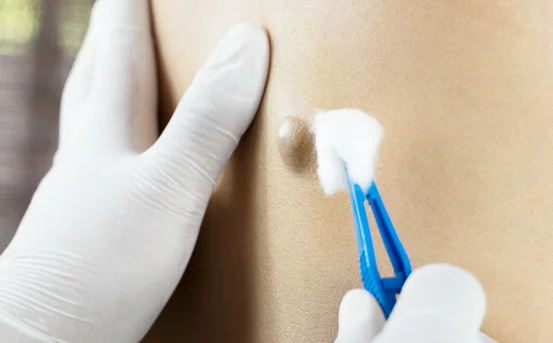Introduction
Glaucoma is a serious eye disease that damages the optic nerve and can lead to permanent vision loss if not treated on time. The condition is often linked to elevated intraocular pressure (IOP), which places stress on the optic nerve, causing progressive vision loss. Because glaucoma is usually painless and develops slowly, many patients do not realize they have it until the disease is advanced.
Early diagnosis and treatment are crucial for preventing irreversible vision loss. Glaucoma treatment focuses primarily on lowering eye pressure and preventing further damage to the optic nerve. There are several treatment procedures available today, each designed to slow the progression of the disease and preserve the patient’s vision. Below are the main glaucoma procedure used for eye treatment.
Glaucoma Treatment Procedure
- Medications :- One of the first-line procedures in glaucoma treatment is the use of medications, particularly prescription eye drops. These medications help lower intraocular pressure by either decreasing the amount of fluid (aqueous humor) the eye produces or improving its drainage. Eye drops need to be used consistently as prescribed by the ophthalmologist. Skipping doses or using the drops incorrectly can reduce their effectiveness and increase the risk of further vision loss. In some cases, oral medications are prescribed in addition to eye drops. These medications also work by lowering eye pressure but are usually used for short-term control or when eye drops alone are not enough. Regular monitoring is essential, as certain medications may have side effects like changes in heart rate, dry mouth, or fatigue.
- Laser Therapy :- Laser procedures are a common next step when medications are not sufficient or if patients are unable to tolerate them. Laser therapy can effectively reduce eye pressure and is often performed in an outpatient setting with minimal discomfort. One widely used laser procedure is laser trabeculoplasty, where a laser is used to open up the eye’s drainage channels, allowing fluid to flow out more easily. Another procedure, called laser iridotomy, is used in angle-closure glaucoma and involves creating a small hole in the iris to improve fluid flow. Laser therapy can be highly effective, but its results may gradually diminish over time. Many patients still need to use medications after undergoing laser treatment, although often at lower dosages.
- Minimally Invasive Glaucoma Surgery (MIGS) :- Minimally invasive glaucoma surgery (MIGS) is a newer category of procedures designed to reduce eye pressure with less trauma to the eye compared to traditional surgery. These procedures involve the use of tiny devices or stents that improve fluid drainage. MIGS is typically recommended for patients with mild to moderate glaucoma. It is often performed at the same time as cataract surgery, making it a convenient option for older patients with both conditions. The recovery period is generally shorter than with more invasive surgeries, and the risk of complications is lower. Though MIGS can be effective, it may not lower eye pressure as dramatically as traditional glaucoma surgery, so it is not always the best choice for patients with advanced disease.
- Traditional Glaucoma Surgery :- When medications, laser therapy, or minimally invasive procedures are not effective in controlling glaucoma, traditional surgery may be required. These procedures are designed to create a new drainage channel or improve existing outflow, reducing intraocular pressure significantly. Trabeculectomy is the most common type of traditional glaucoma surgery. In this procedure, the surgeon creates a small flap in the sclera (white of the eye) and a filtering bleb where fluid can drain, reducing pressure. Another option is glaucoma drainage implants, where a tiny tube is placed inside the eye to direct fluid to a reservoir, which is then absorbed by the body.
- Combined Procedures :- Some patients may benefit from a combination of glaucoma treatments. For example, medications may be used alongside laser therapy, or a MIGS procedure may be performed at the same time as cataract surgery. Combining procedures can help achieve better pressure control and reduce the number of medications required. The decision to combine treatments is based on the severity of the disease, the patient’s overall eye health, and how well previous treatments have worked.
- Ongoing Monitoring and Adjustments :- Glaucoma treatment is not a one-time event but a lifelong process. Even after undergoing surgery or laser therapy, patients require regular follow-up visits to monitor eye pressure and optic nerve health. Routine exams allow the ophthalmologist to detect any changes early and adjust the treatment plan if necessary. This may involve changing medications, repeating laser therapy, or performing additional surgery if the disease continues to progress. Patients are also advised to maintain a healthy lifestyle, avoid activities that increase eye pressure, and follow all instructions from their doctor to protect their vision long-term.
Conclusion
The glaucoma treatment procedure focuses on lowering intraocular pressure to prevent further damage to the optic nerve and preserve vision. Depending on the severity of the disease, treatment may involve medications, laser therapy, minimally invasive surgery, or traditional surgery.
Early diagnosis and timely treatment are critical because vision loss from glaucoma is irreversible. Regular eye exams, especially for those at higher risk, ensure that the disease is detected in its early stages when treatment is most effective.
If you have been diagnosed with glaucoma or are at risk, consult an ophthalmologist to discuss the best treatment options for your condition. With the right care and ongoing monitoring, it is possible to slow or stop the progression of glaucoma and maintain healthy vision.























